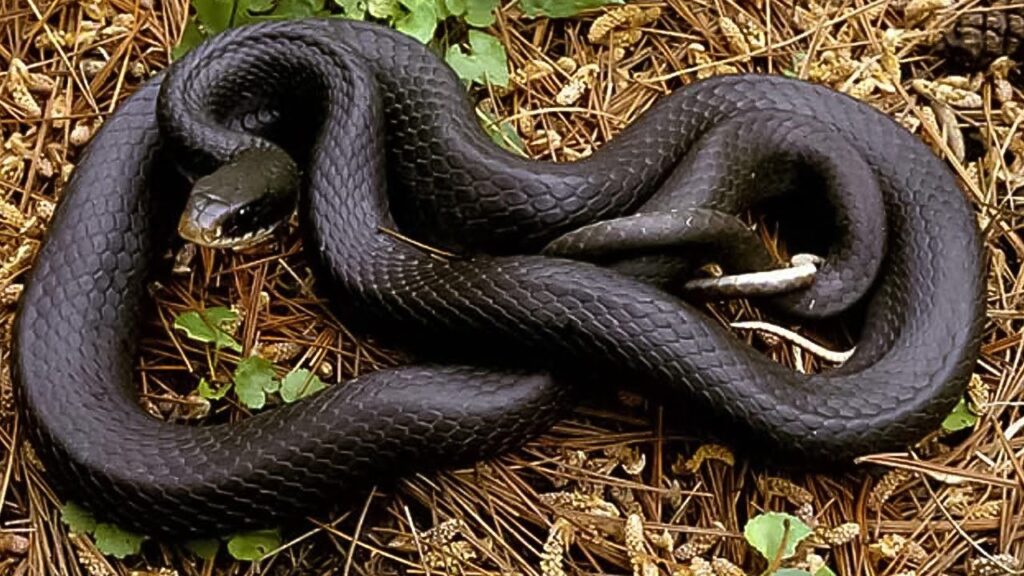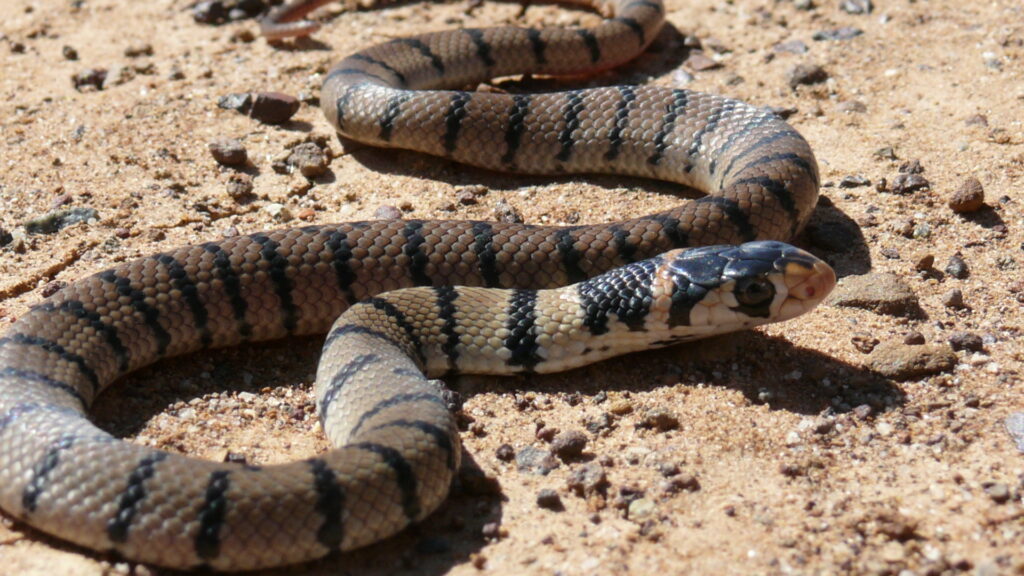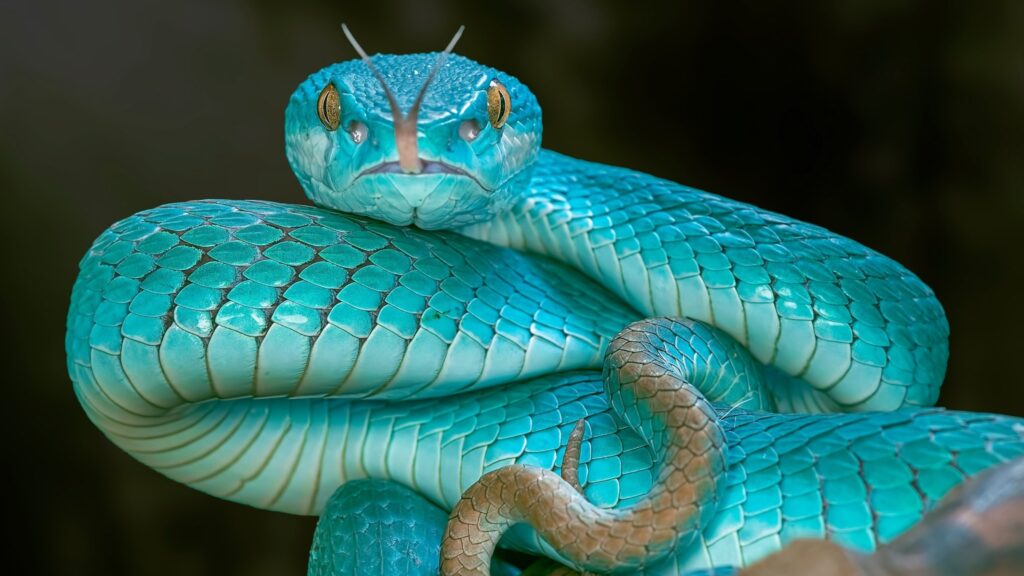Table of Contents
ToggleIntroduction

Florida, known for its lush landscapes and abundant wildlife, harbors a diverse array of snake species, some of which are venomous and demand our attention. Poison Snakes Of Florida, As enthusiasts and curious onlookers explore the Sunshine State’s natural wonders, understanding the presence and characteristics of poisonous snakes becomes paramount for safety and coexistence. In this exploration, we delve into the world of venomous serpents in Florida, unraveling the unique features, habitats, and potential encounters with these intriguing reptiles.
Habitats and Distribution of Poisonous Snakes in Florida
Florida’s diverse ecosystems provide a varied and extensive range of habitats for its serpent inhabitants, including venomous species. Understanding the distribution of poisonous snakes across different environments is crucial for residents, hikers, and nature enthusiasts alike.
Wetlands and Marshy Areas
Wetlands and marshy areas, characteristic of Florida’s landscape, serve as prime habitats for several venomous snake species. The Eastern Diamondback Rattlesnake, known for its preference for dry habitats, can also be found in the bordering marshes. The Cottonmouth, or Water Moccasin, is well adapted to aquatic environments, making wetlands, ponds, and swampy regions their ideal homes. These areas not only provide ample prey opportunities but also offer concealment and protection for these elusive serpents.
Wooded and Forested Regions
Florida’s wooded and forested regions, encompassing both upland and lowland habitats, are favored by various venomous snakes. The Timber Rattlesnake, for instance, thrives in pine flatwoods and mixed hardwood forests. The Pygmy Rattlesnake species, including the Dusky Pygmy Rattlesnake, are often found in wooded areas, taking advantage of the cover provided by the leaf litter and vegetation. The diverse vegetation and prey availability make these habitats attractive for venomous snakes seeking shelter and sustenance.
Residential and Urban Environments
Venomous snakes have also adapted to residential and urban environments in Florida, posing potential encounters for residents. As urbanization expands, these serpents may find themselves in proximity to human dwellings. The Eastern Diamondback Rattlesnake, for example, may venture into suburban areas in search of prey or suitable shelter. It is in these environments that education and awareness become essential, enabling residents to coexist safely with these fascinating yet potentially dangerous creatures.
Identification and Characteristics of Poisonous Snakes in Florida
Florida’s diverse snake population includes several venomous species, each with unique physical features and behaviors. Recognizing and understanding these characteristics is crucial for residents and outdoor enthusiasts to ensure safe coexistence with these serpents.
Physical Features of Venomous Snakes
Head Shape: Venomous snakes, such as the Pit Vipers (e.g., rattlesnakes and cottonmouths), typically have a triangular or “pit” head shape. This is in contrast to non-venomous snakes, which generally have more rounded heads.
Pupils: Pit Vipers usually have vertical, elliptical pupils, while non-venomous snakes often have round pupils. Observing the eye shape can aid in quick visual identification.
Coloration and Patterns: Many venomous snakes exhibit coloration and patterns that help them blend into their natural environments. Timber Rattlesnakes, for example, may have a distinctive pattern of alternating dark and light bands, while the Coral Snake boasts vibrant red, yellow, and black bands.
Recognizing Venomous vs. Non-venomous Species
Heat-Sensing Pits: Venomous snakes, particularly Pit Vipers, possess specialized heat-sensing pits located between the eye and nostril on each side of their head. These pits aid in detecting prey and navigating their surroundings. Non-venomous snakes lack these heat-sensing structures.
Tail Characteristics: The tails of venomous snakes are often tapered and may end in a rattling segment in the case of rattlesnakes. Non-venomous snakes typically have slender, tapering tails without rattles.
Behavioral Traits: While behavior alone is not a foolproof indicator, venomous snakes may exhibit defensive behaviors like coiling and rattling. However, some non-venomous snakes, like the Eastern Hognose Snake, may mimic these behaviors as a defense mechanism.

Behavioral Cues and Warning Signs
Rattling: Rattlesnakes are known for the signature rattling sound produced by the segments at the end of their tails. It serves as a warning sign and a way to deter potential threats.
Defensive Posture: When feeling threatened, venomous snakes may adopt a defensive posture, coiling their bodies and raising their heads. This behavior is a cue for humans and other potential predators to keep a safe distance.
Habitat Preferences: Understanding the preferred habitats of venomous snakes can serve as a preemptive warning. For instance, cottonmouths are often found near water, while rattlesnakes may be encountered in dry, rocky areas.
Safety Measures and Encounters with Venomous Snakes in Florida
Encounters with venomous snakes, while rare, require a level of preparedness and awareness, particularly in regions like Florida, where diverse snake species coexist with human populations. Understanding safety measures and knowing how to respond in case of an encounter are crucial aspects of responsible outdoor activities.
Prevention and Awareness
Stay on Designated Trails: When exploring natural areas, stick to designated trails and paths to minimize the risk of stumbling upon a snake in concealed vegetation.
Wear Appropriate Footwear: Sturdy, closed-toe shoes offer protection against snake bites. Avoid sandals or open-toe shoes, especially in snake-prone habitats.
Use Tools Safely: If engaging in outdoor activities like gardening, be cautious with tools that may attract snakes. Check areas before reaching into vegetation or using equipment.
Be Vigilant in Snake Habitats: In areas known for snake activity, such as wooded regions and wetlands, maintain awareness of your surroundings. Watch where you step, and be cautious when reaching into areas with limited visibility.
What to Do in Case of a Venomous Snake Encounter
Remain Calm: If you encounter a venomous snake, stay calm and avoid sudden movements. Most snakes prefer to avoid confrontation and will retreat if given the chance.
Back Away Slowly: Back away slowly to create distance between you and the snake. Do not turn your back on the snake, and maintain visual contact.
Do Not Attempt to Handle the Snake: Never attempt to handle a venomous snake, even if you believe it to be non-aggressive. Respect their space and let them move away on their own.

Alert Others: If in a public area, alert others to the snake’s presence without causing panic. Advise them also to take precautions and maintain a safe distance.
Conclusion
In our exploration of the poisonous snakes of Florida, we find ourselves immersed in a fascinating realm where serpentine diversity intertwines with the Sunshine State’s rich ecosystems. The awareness of venomous snakes, an essential aspect of responsible exploration and habitation, serves as a reminder of the delicate balance between human activities and the natural world.
As we navigate the varied landscapes—from the wetlands of the Everglades to the suburban neighborhoods—we recognize the significance of understanding and respecting Florida’s venomous serpents. Awareness empowers us to coexist respectfully, minimizing potential encounters and ensuring the safety of both humans and these remarkable reptiles.







